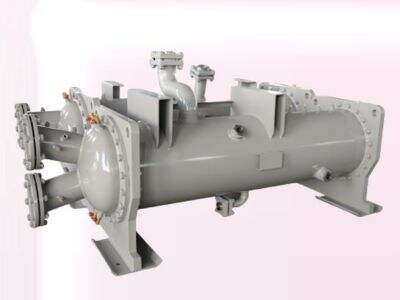From primitive channels to advanced heat exchangers
The heat exchanger is one of the most important parts in refrigeration pressure vessels. The magic happens here: where heat is moved away somewhere else, thus keeping our food and drinks nice and cold. The shell qualifies as one of the most widespread methods of heat exchangers, and it is also with a tube design.
New Development in Shell and Tube Technology:
With time, there have been a lot of improvements in shell and tube technology. Over the years, engineers and scientists have attempted to optimize these heat exchangers to improve efficiency and efficacy. Some use copper whereas other stainless steel designs, and both promise that these tubes would greatly decrease the time it takes to absorb heat.
One such change is the inclusion of fins on the tubes, which increases heat transfer area. This allows more heat to be transferred between the two liquids, and thus improves the efficiency of the refrigeration system. These advancements have totally changed the heating exchanger game making it more efficient and reliable than ever before.
Evolution Of Current Refrigeration Systems:
Modern refrigeration systems have come a long way due to the technological developments in the field of shell and tube. Now, more than ever, rotary compressor refrigeration system are efficient, dependable and cost effective. One of the primary reasons for this has been the enhanced heat exchangers responsible for cooling.
Today, we have more advanced shell and tube heat exchangers in refrigeration systems which can accommodate higher pressure differentials and temperature differentials enabling the refrigeration plants to run better. It is also one of the smallest and most space saving systems designed to power a range of applications, from residential refrigerators to large industrial cooling system.
Advanced Design Features Enhancing Efficiency:
A large part of the efficiency improvements in modern refrigeration use is due to the innovation in design features, as we will undoubtedly break down. A few examples include variable speed fans that automatically adjust the airflow based on system cooling needs. This allows energy consumption to be reduced and improves the overall efficiency of the system.
One such advanced feature is the employment of microchannel heat exchangers in place of conventional tube and shell designs, which are smaller and more efficient. These are known to offer a superior heat transfer coefficient that can allow this type of heat exchanger to offload more heat within less time. This allows them to cool the flash evaporator quickly which reduces energy costs and makes chillers an appealing choice for modern refrigeration systems.
Future Holds for Shell and Tube Design in Refrigeration Systems:
In the upcoming future, it remains certain that shell and tube design will continue to remain indispensable for hydraulic oil cooler heat exchanger. For this reason, these heat exchangers are always under engineers and scientists' studies trying to come up with new and better innovations. An example of this is the application of high-performance coatings on the tubes, which inhibit fouling and corrosion, thus heightening heat exchanger life.
It is also exciting to improve the performance of shell and tube heat exchangers by utilizing artificial intelligence. AI systems can analyze data in real-time to vary the flow rates and temperatures of the liquids, optimizing efficiency and minimizing energy consumption. All of these developments are heralds for a future of smarter, more energy-efficient and environmentally responsible refrigeration.
In summary, the story of shell and tube design for modern refrigeration is something truly fascinating. Technology has well evolved from basic conduits to high-end heat exchangers hence the massive paradigm shift regarding cooling systems. Shell and tube refrigeration will be alive and well for the foreseeable future, we can be sure that advancements in engineering like those seen today stand to guarantee it performs better and longer for even more efficient, sustainable refrigeration.

 EN
EN
 AR
AR
 HR
HR
 CS
CS
 DA
DA
 NL
NL
 FI
FI
 FR
FR
 DE
DE
 EL
EL
 HI
HI
 IT
IT
 JA
JA
 KO
KO
 PL
PL
 PT
PT
 RO
RO
 RU
RU
 ES
ES
 TL
TL
 IW
IW
 ID
ID
 LV
LV
 SL
SL
 UK
UK
 VI
VI
 HU
HU
 TH
TH
 TR
TR
 MS
MS
 GA
GA
 MK
MK
 YI
YI
 HY
HY
 AZ
AZ
 BN
BN
 LO
LO
 LA
LA
 MY
MY
 KK
KK




